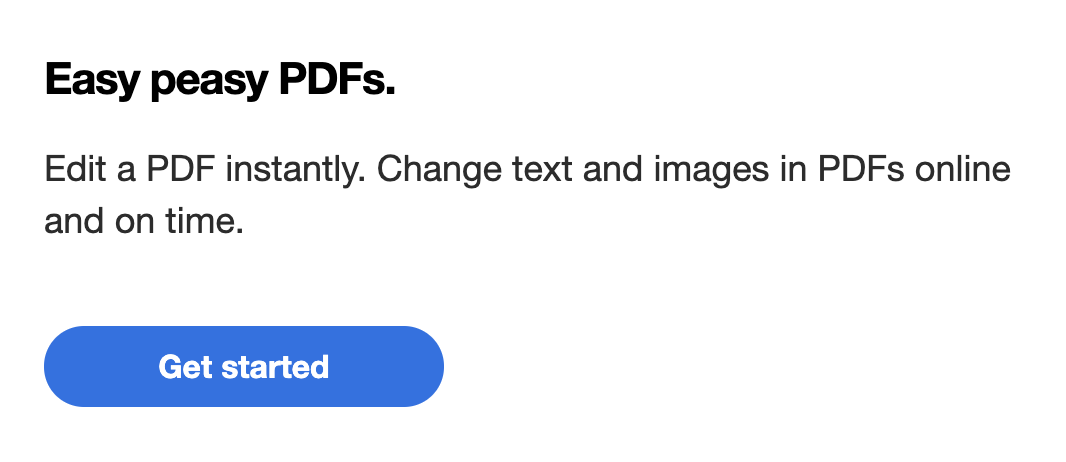About article
8 Important Parts of an Email Explained

Emails are an important tool for personal and professional communication. Understanding the anatomy of an email, the parts of an email and how they work together can help you create more effective emails. How well you use the different parts of an email can directly impact the open rate, click-through rate, and the overall success of your email outreach. In this article, we'll dive into the 8 important parts of an email and how they work together to create a successful email campaign.
The first important part of an email is the subject line.
The subject line is the first thing your recipient sees, arguably making it a crucial part of an email. A great subject line is brief, clear, and captures the essence of the email, enticing the recipient to open it. A good subject line can make the difference between an email being opened, or ignored.
Don't think of the subject line as a headline, it is more of an enticement. It should give the recipient a reason to open the email, without giving too much away. The subject line sets the tone for the email and can be used to create a sense of urgency or excitement. For example, if an email contains important information or a deadline, the subject line should reflect that. If the email is more casual, the tone of the subject line can be lighter.
Understanding the recipient's needs and expectations will help you compose a compelling subject line. A busy professional appreciates a clear, straightforward and informative subject line. Whereas a friendlier, lighter subject line may be more appropriate for a personal email. It is important to maintain a balance between clarity and intrigue, helping your email stand out amongst an inbox full of emails.

Adobe Acrobat's subject and sender information
The second important part of an email is the sender information (From).
The "From" field is an integral part of an email that helps build trust and credibility. It is more likely that a recipint will open an email from a known sender. In a more professional settings, a recognizable name and email address are used to establish the email's authenticity.
The sender's details can make a huge difference in the open rates of an email. By changing the name or email address, the recipient will not know who this email is from. When the recipient does not recognize the name or email address, they may consider it spam or, irrelevant. Hence, it is important to have a professional email address, and it is good practise to display your full name. In business, the sender's name has to be consistent with the company's branding. Their name and email address should be standardized especially when sending emails from the company's domain.
In addition to the sender's name and email address, consider including a photo or logo within the sender's information if your email client allows such customization. This can help to further establish the sender's identity and make the email more recognizable. This adds to the credibility of the email and creates a good impression on the recipient.
The third important part of an email is the greeting (Salutation).
The greeting is the first line of the email body, following the subject line. It is an important part of an email as it can set the tone of your message and establish a connection with the recipient. A nice greeting can make the recipient feel respected and engaged, while a poorly chosen one can give a wrong impression.
The degree of formality in a greeting should reflect your relationship with the recipient. In a professional context, a more formal greeting is more appropriate, whether it's the first time you're emailing someone or if the topics you'll be discussing are important. Take a business proposal as an example, it would typically start with a formal salutation, whereas an email to a colleague might have a more casual one.
It is also important to consider cultural differences when writing your greeting. In some cultures, using first names in a greeting may be seen as an informal greeting; in others, it is perfectly acceptable. When in doubt, it is better to stay formal. Remember, the greeting sets the tone of the email, so it's worth taking your time to get it right.
The fourth important part of an email is the body.
The email body is responsible for communicating your primary message. It is one of the more substantial parts of an email, and its effectiveness depends on its clarity, organization, and relevance. Therefore, organize the email so that it is easy for the recipient to follow and understand your message.
The introduction should be brief and concise, setting the stage for the email content. It should help the reader understand the reason for your email quickly. Now that you have the email introduction covered, you can move on to the main body of the email, where you can provide more details about the subject of the email.
It is important to structure the information logically. Bullet points or numbered lists can help make the content more digestible and easier to read, especially when covering multiple topics. Similarly, for longer emails, breaking the content into short paragraphs with more precise headings can improve readability.
An email must use a specific tone to fit the formality of the particular situation. In a business situation, one should use a formal tone, whereas a more casual tone may be used in a less formal situation. The email should be clear and concise in whatever tone it takes. Avoid jargon and overly complex constructions, as they can make the email difficult to follow.
Before sending an email, be sure to proofread it carefully. Every spelling and grammatical error detracts from your credibility and is likely to distract from the core message you intend to communicate. A well-written email reflects professionalism and attention to detail.
The fifth important part of an email is the call to action (CTA).
A good call to action is clear, direct, and compelling. It should effectively communicate what you want the recipient to do and why they should do it.
A call to action should be specific, leaving no room for misinterpretation. The recipient should know exactly what you want them to do, whether it's to click a link, download a document, or respond to an email. The more finely detailed and direct the nature of your CTA, the higher the probability that people will follow through.

Adobe Acrobat's call to action
Here are some examples of effective calls to action:
- Solicitation of response: "Please respond by Friday if you are interested in attending."
- Redirecting to a resource: "Click here to download the report."
- Scheduling a meeting: "Can we schedule a meeting for Monday at 3 PM?"
Here are some tips for creating effective calls to action:
- Be specific: Clearly state what action you want the recipient to take.
- Create urgency: The language used should be time-bound and create a sense of urgency.
- Put it in a prominent place: The CTA should be easy to spot, it is typically placed at the end of the email.
The sixth important part of an email is the closing.
Your closing is the last impression you make in the email. Be sure to end your email on a positive note, leaving the recipient with a good impression. A well-worded closing will also let the recipient know that they are valued and appreciated.
Keep your closing consistent with the tone of the email. It is usually proper, especially if the email is part of a business transaction or official communication in a formal setting. Casual emails can have a more relaxed closing, but it should still be polite and respectful.
Apart from the closing, the email should be closed with your name, followed by any other professional information you would like to include, like title, company name, and contact information.
The seventh important part of an email are the attachments.
Attachments are documents you attach to your email and send along with the email. They can be documents, images, spreadsheets, or any other files that you want to share with the recipient. Attachment management is essential in ensuring that your email is well-organized and that the attached files are accessible to the receiver.
When you send attachments with an email, the file size must be considered. Large files may affect the delivery of the email or trigger spam filters. If the attachments are oversized, you should compress them or use a file-sharing service. This will guarantee that they reach the recipient without any issues.
The eighth important part of an email is the signature.
The email signature provides more information about you, the sender. It usually contains your full name, title, company name, and other contact details. A proper signature enhances your professional image by allowing the recipient to access your contact information easily.
An email signature is part of your branding. It needs to have the same feel as your company's brand and contain all the necessary information to help the recipient reach you. This can include phone number, email address, or other contact details.
The email signature should be simple and professional. To avoid clutter, don't use too many colors, fonts, or images. Instead, choose a clean, straightforward design that reflects your personal or company brand.
Conclusion
It is important to understand the different parts of an email and how they can improve your email communications. Focusing on the parts of an email from the subject, sender information, greeting, body, call to action, closing, attachments, and signature, you can create engaging emails that are sure to be opened.
Whether you're sending a quick note to a colleague or a detailed proposal to a client, these little parts of an email can make a big difference. Emails are a powerful tool, and knowing how to use them effectively is a valuable skill that can enhance your personal and professional communications.
Everything you need to power up your email game in one place.
Start now for free. No credit card required.
